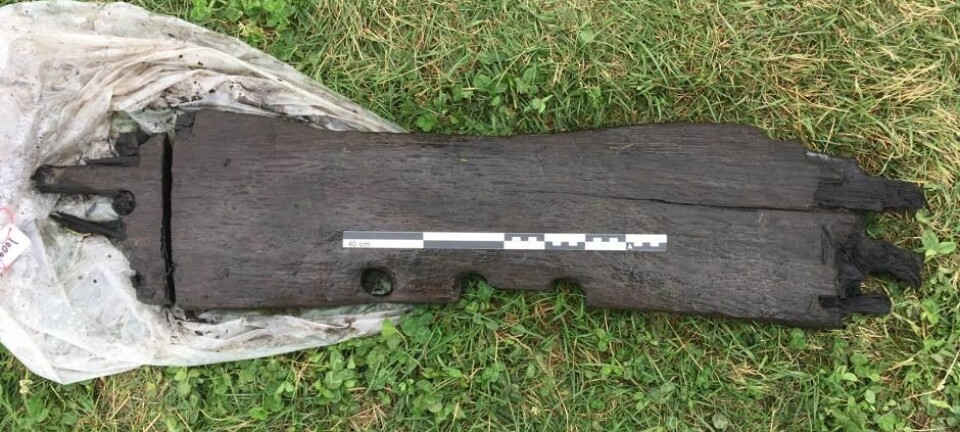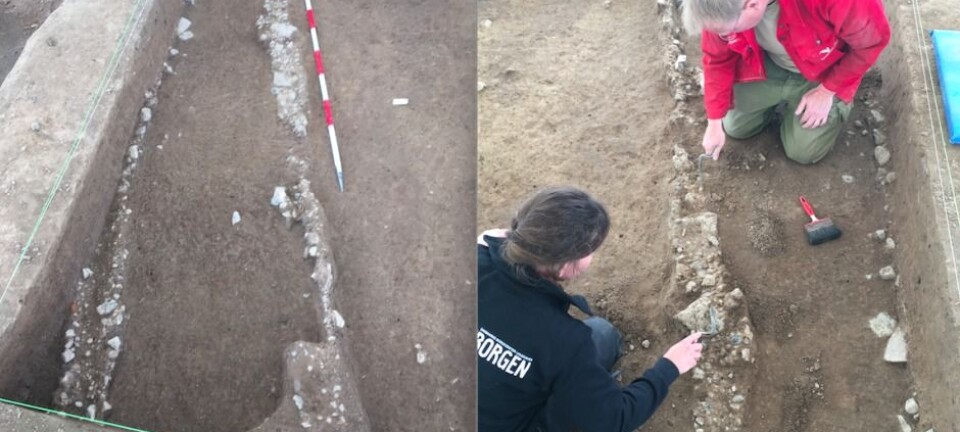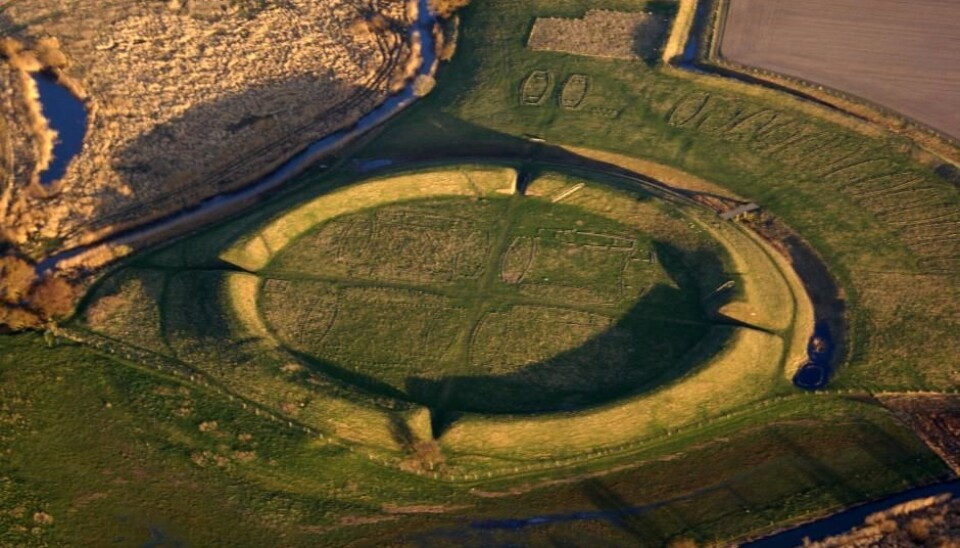
Danish Viking fortresses were designed to fend off other Vikings
After four years, the excavation of the famous Viking fortress, Borgring, is coming to a close and archaeologists can now describe the fortress in a broader perspective: An anti-Viking defence that allowed the Danish King to forge a new, mobile army.
Four years ago, my colleague Nanna Holm from the Museum Southeast Denmark and I, announced our new discovery: A Viking fortress, known as Borgring, in Lellinge, not far from the Danish capital, Copenhagen.
The news travelled around the world, and since then our excavations have continued to cast new light on the Viking Age.
Thousands of visitors have flocked to the site, which has been open each summer as a living museum. But if you want to visit then you will need to be quick, as this summer will probably be the last year of excavations at Borgring.
Here are some of the most important and surprising discoveries made during the excavations. These finds not only tell us about the history of the fortress, but also about the purpose of these unique, ring fortresses.

Read More: New viking fortress discovered in Denmark
A “new” ring fortress?
Borgring is one of five, large ring fortresses from the Viking Age in Denmark. Each of the large fortresses were constructed in a perfect circle and are some of the best known monuments left by the Vikings.
The other fortresses include Trelleborg, Fyrkat, Nonnebakken, and Aggersborg, as well as Borgeby in Southern Sweden. All were built by King Harold Bluetooth who reigned between circa 958 and 987 CE and is best known in Denmark for erecting the Jelling Stone—a large stone with the first written reference to the name “Denmark,” often referred to as Denmark’s birth certificate.
It had been 60 years since archaeologists had discovered such a ring fortress in Denmark when we finally found Borgring. Many doubted that it was indeed a Viking fortress, while others claimed that the fortress had been known about for some time.
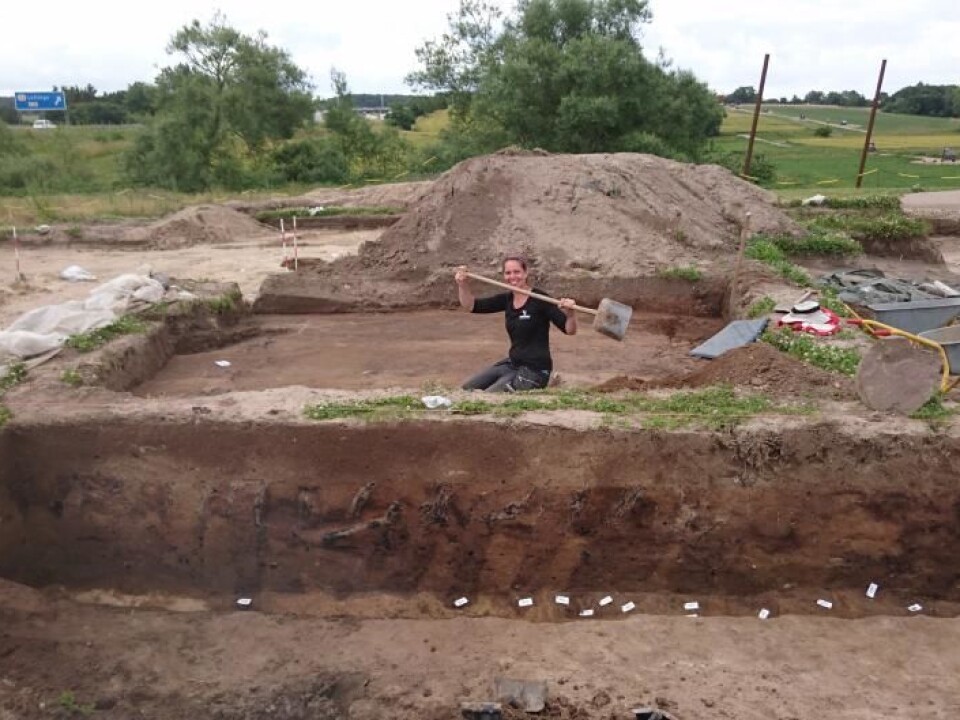
Locals remember an officer from the Danish Air force spotting the outline of the fortress in 1970, in aerial photos. He contacted the National Museum of Denmark who investigated the site and concluded that there were no Viking remains. People thus knew about the old earthworks in a field north of Lellinge, but archaeologists did not connect it to Harold Bluetooth’s fortresses.
Read More: Viking fortress in Denmark stumps archaeologists
Discoveries started to turn up
But the critics came around, as the results of the excavations started coming in.
Among the most important results, which ScienceNordic has previously written about, are.
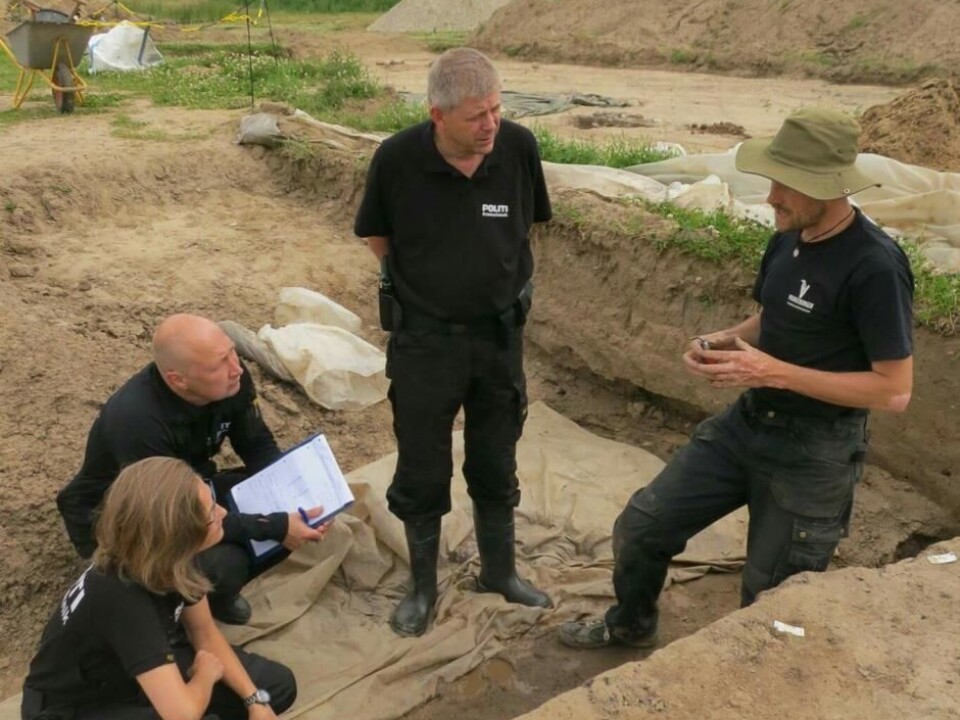
- Carbon-14 dating, which placed the fortress in the early 900s.
- Later discoveries of a Viking toolbox, buildings, ceramics, and beads and jewellery, indicating activities in the fortress.
In May 2018, Aarhus University together with the Danish Agency for Culture and Palaces, held a conference on the Danish Viking Age ring fortresses, which are to be nominated as UNESCO world heritage sites. It was clear that even the researchers who had been sceptical, were no longer in any doubt that Borgring was one of Harold Bluetooth’s fortresses.
Read More: Archaeologists finally know how old Denmark’s fifth Viking fortress is
A network of fortresses
Since 2016, scientists from Museum Southeast Denmark, the National Museum of Denmark, and Aarhus University, Denmark, have excavated the site, with funding from the A.P. Møller Foundation and Køge Municipality.
We’ve learnt a lot about the fortress’s history, but also about the Viking fortresses in general.
The fortresses are impressive enough on their own. But the most unique aspect is that they were constructed as a coordinated project—a network of fortresses across the country.
Many have tried to explain what purpose the network of fortifications served. Here, it’s important to ask the right questions, as the challenge is to find an explanation that best accounts for everything that we know about these fortresses.
Read More: Archaeologists discover a Viking toolbox
Big fortifications, short lifespan
The ring fortresses only existed for a short part of the Viking Age.
Two of the best dated fortresses, Fyrkat and Trelleborg, look to have been established between 974 and 981, and finds from the other fortresses suggest a similar date.
No other large fortifications existed in Denmark in the rest of the Viking Age, from the end of the 700s up to 1000s, except for city walls in Hedeby (in modern day Germany), Ribe, and Aarhus.
Chieftains and kings built large halls and farms, but not fortresses.
Read More: This tiny ornament may have belonged to Harold Bluetooth’s shaman
Four hypotheses for the Viking fortresses
Why did Harold Bluetooth build five fortresses in the 970s?
This is the central question that has bothered Viking researchers since the fortresses were first discovered. So far, four main hypotheses have been floated:
- Training camps for the Viking army that conquered England around the time of Sweyn Forkbeard. This hypothesis was shelved in the 80s, when tree-ring dating revealed that Trelleborg and Fyrkat fortresses were built and used decades before the large attack on England.
- Fortified centres of royal control built by Harold Bluetooth to subdue the population in the newly united Denmark: This was the dominant hypothesis for many years, but the dates again did not fit. Why would Bluetooth build the fortresses in the later part of his reign, long after he became king around 958 CE, and long after he declared Denmark a Christian country in 963 CE?
- Military bases during the fight between Bluetooth and his son, Sweyn Forkbeard: Bluetooth’s son rebelled against his father, but if the fortresses were built around 975, this rebellion must have lasted more than a decade across the entire country. Again, it didn’t fit.
- A result of an extraordinary foreign policy situation: Early in Bluetooth’s reign, a new power was growing from central Europe under King Otto I, who was crowned emperor in 962. Otto’s growing power was probably a crucial factor in Harold Bluetooth’s conversion to Christianity, to avoid becoming Otto’s next target. Many researchers have come to the conclusion, that it was the unique set of challenges posed by this situation that led Harold Bluetooth to construct the fortresses. Let me explain why.
Read More: New discovery could rewrite Viking fortresses’ history
A network to defend against Viking attacks
Otto I died in 973 and was succeeded by his son, Otto II who attacked Danevirke (in what is modern day Germany), upping the threat to Harold Bluetooth’s Denmark, which remained a target for war until Otto II’s death in 983.
These events coincide precisely with activity at the fortresses, and can explain the need for such unusual fortifications.
But a mystery remains: If the threat was from Germany, why were they built so far from the Danish-German border, on the island of Fyn and Zealand, and Skåne in southern Sweden?
In 2014 I put forward another version of this “invasion theory,” together with my colleague Else Roesdahl. We suggested that the acute danger probably came from Otto II, which explained the timing of the fortress construction.
But another factor can explain the distribution of fortresses around the country: The threat from the south left Harold Bluetooth exposed to other threats from elsewhere, specifically from Norway and Sweden, who might try to exploit the king’s weak position.
And so fortresses were established right across the kingdom. They was a coastal defence: Rather than being Viking fortresses, they were actually “anti-Viking” fortresses.
Read More: Vikings versus Iron Age: Who made the best swords?
A new theory
It was this hypothesis that led us to discover Borgring.
It suggested that Harold Bluetooth must also have had a fortress to protect the east coast of the country, which turned out to be the case.
What we couldn’t explain was, how exactly the fortresses were used as a defence. And this is where the discoveries made at Borgring can shed some new light.
With this in mind, we can propose a new explanation for the fortresses, and a more direct connection between Harold Bluetooth’s fight on the southern borders and his need for coastal defences in the rest of the country.
Read More: Denmark’s first Viking king printed in 3D
Built in a hurry
The excavations at Borgring have revealed a fortress built to the same design as Trelleborg and the other ring fortresses. We also see that the fortifications were well planned and completed swiftly.
The landscape was levelled, and the walls were built in a precise circle, with gently sloping sides inside the fortress. The interior is divided into even sections, with four wooden gates placed at exactly 90 degrees to each other.
But then… nothing.
There’s no sign of repairs or extensions to the walls, there are only feeble traces of wooden constructions, which could have supported a high wall, and unlike Trelleborg, Fyrkat, and Aggersborg, there are no signs of construction in the interior of the fortress.
But there are traces of a damaging fire in numerous places around the fortress, and deep wheel tracks that suggest long-term use by traffic coming in and out.
Read More: Did Vikings really fight behind a shield wall?
A fortress for refugees
How can we explain these features? It is possible that the construction was interrupted prematurely, but in this case we might have expected to see more clear traces of the building process, and we wouldn’t expect to see any later activity.
The wheel tracks suggest that Borgring was sufficiently ready for use, even without the construction of actual buildings or dwellings inside.
Looking at the excavation drawings from Trelleborg made in the 1930s, we see that the fortress walls were built up numerous times, with the oldest phase most similar to the walls at Borgring.
And Borgring is not alone: One of the other fortresses, Nonnebakken, does not appear to have any interior buildings either. This suggests, that the primary function of the fortresses was not to house a permanent settlement, but to allow people to flee there for short periods of time.
This function as a place for refugees to seek shelter, points to a new and stronger connection between the fortresses and Harold Bluetooth’s was against Otto II.
Read More: Archaeologist discovers a new style of Viking combat
Fortresses sent warriors to the southern border
The war with the south meant that Harold needed to call up reinforcements from all of the supporting chieftains to gather warriors along the southern border.
Such an operation was described in the Skaldic poem Vellakla, written as a praise poem to the Norwegian Earl Hakon, a contemporary of Harald Bluetooth. According to the poem, Hakon was summoned to assist Harald’s fighting at the Danevirke.
This left over parts of the country without the warriors who would usually defend them and entirely unprotected. In order to win the war with the south, Bluetooth had to offer some other form of protection to these areas, hence the fortresses.
Placed on top of a fortified wall, it was possible for a poorly armed and untrained person, man or woman, to fight off a well-trained warrior.
If enough people sought refuge in the fortress, then the attackers were unlikely to take it. They could initiate a siege, but time would be against them.
Read More: This is what living in the Viking age looked like
A successful strategy
The fortresses offered protection to locals, in the absence of the warriors who had be called up to protect the south. This allowed locals to withstand Viking attacks, and provided Harold Bluetooth with a mobile army that he could deploy to the German border.
The fortresses were intended to deter potential attackers, by allowing the local population to seek shelter and defend themselves.
Seen this way, the fortresses are no longer a mystery. In fact, they successfully fulfilled their mission.
Read More: Vikings held political summits across Europe
Harold Bluetooth strengthened his power base
Constructing the ring fortresses, allowed Harold to consolidate his power throughout the kingdom in a way that no other king of Denmark had done before.
The large buildings of Trelleborg suggest that some of the fortresses came in due time to take on a more active role as settlements or perhaps winter camps for warriors. But first and foremost, this network of fortresses allowed the king to exploit his chief military assets, warriors, more effectively.
These warriors did not man the fortresses, which were, on the contrary, a means of protecting the portion of the population who were not warriors. This was a decisive countermeasure that allowed Harold to defend and win the war in another part of the kingdom.
Excavations at Borgring have revealed new pieces of the puzzle to understand all of Harold Bluetooth’s fortresses.
You can still catch a glimpse of the excavations of the walls and west gate, before this little piece of Viking Age Denmark will be covered by soil and grass once more.
---------------
Read this article in Danish at ForskerZonen, part of Videnskab.dk
Translated by: Catherine Jex
Scientific links
- Viking Fortress project homepage
- 'Borgring: the discovery of a Viking Age ring fortress', Antiquity (2017), doi: 10.15184/aqy.2017.118
